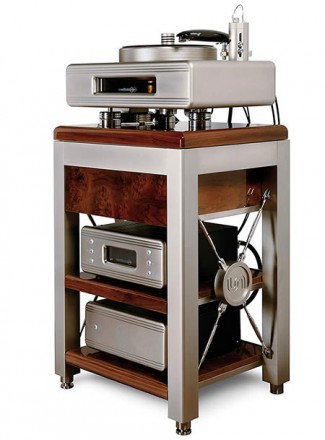
When last we left off, I was regaling you with tales from my attempts to preserve the magic of vinyl in a digital recording. VoP, or Vinyl over PCM, is coinage of my own mint, but serves to ‘brand’ the needle-drop process in a compact acronym. My setup at the moment is kind of astounding, and though I’ve had this vinyl rig for quite awhile I’m still a bit flabbergasted that it’s here and that I get to use it whenever I want to.
On the Caliburn’s iconic “Cobra” tonearm I’ve got a Soundsmith Hyperion phono cartridge mounted, and it has proven to be one of the most effortless and neutral sounding carts I’ve ever mated with this system. Because of this Hyperion’s peculiar loading requirements, the Soundsmith MCP-2 proved to be a perfect pairing. Despite it’s rather pedestrian $999.00 price (“pedestrian” compared to the Caliburn’s $200k sticker, that is), the MCP-2 is actually quite the top shelf performer.
This cart/phonopre combination has made beautiful music in my “big rig” for quite awhile now, such that I haven’t had thoughts of straying. The Caliburn is a storied legend, and definitely deserving of its accolades. I’ve not heard a more resolving, majestic record player in the world, and I’ve heard (and even owned) quite a few contenders.
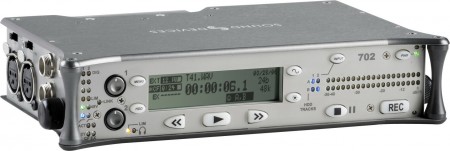
The output of this analog system is fed into a Sound Devices 702 PCM digital recorder. I was alerted to this device by Peter McGrath, who was using a similar one to record classical music. If it’s good enough for Peter, it’s probably way too good for me … which means it’s perfect for what I wanted to do: high resolution needle drops. I had previously done some of these on my Klimo “Beorde Gold Plus” turntable with a Soundsmith “Boheme” cartridge and they turned out pretty swell, but I was upping the ante considerably with this setup and I expected to get stellar results. After all, I wanted to be able to take my vinyl collection with me without losing too much of that vinyl magic – and having a high resolution player the like AK120 II would be the perfect testing ground for portable high-res VoP.

I had managed to get about ten records recorded at 24/96, cut the tracks up in Sony’s Sound Forge Pro, and loaded them onto the AK120 II in preparation for a trip I was taking out west to visit Ultimate Ears, and also accompany Todd Garfinkle of MA Recordings as he brought some of his masters to History of Recorded Sounds to get some lacquers cut at 45 rpm. From ATL to LAX, I’d be on a flight for about 5 hours, and about 4 hours on the way back – plenty of time to do some critical listening over UE’s exemplary custom Reference Monitor IEMs.
Tracks were cut from the 33rpm Blue Note series remastered for Music Matters Jazz, who have done a superlative job on these 33rpm records especially. I love my MMJ 45s, of course, but there seems to be some special sauce to these 33rpm releases.
Aside from the blessing that these little CIEMs rendered by blocking out the several children who were not exactly pleased to be flying in an airplane that morning, three of which were in fairly close proximity, I couldn’t have been happier about my portable music system. The combination of the AK120 II and the UERMs is brilliant, and I was floating on clouds of delicious classic Jazz for hours without even noticing the time go by. The VoP experiment was off to a fantastic start, and I was swooning deeply – this combo was pretty good at hitting that button for me. Maybe it’s not quite a “Caliburn in your pocket” – but it was close enough to make for mighty delightful listening, and it kept me happily engaged with the music and oblivious to my immediate surroundings.

Back home, I’ve plugged the output of the AK120 II into the line input of the HiFiMAN EF100 headphone/speaker integrated amp and have been driving my Audeze LCD-3s and Master & Dynamic MH40s with simply wonderful results. The EF100 is in for review and I’ll have a lot more to say about it later on, but suffice to say that it seems to be a killer for it’s $499 price. Surprisingly resolving with outboard DACs (such as the iFi iDSD Micro being fed USB by the computer) or the AK120 II feed from the 3.5mm stereo line-out. The EF100 is also driving a pair of Anthony Gallo Acoustics “A’Diva” full-range, single-driver balls on my desktop. These are the old model, not the new ones with the fancy new flat driver. Still – these remain some of my favorite nearfield monitors for desktop listening. No crossover, and they disappear like ghosts when the music is flowing.
MAN did this little system do its thing! The sound I was getting out of this little desktop rig, especially with the VoP rips, was proving to be as enjoyable on the desktop as they were during my hours of air travel. I also listened to a bunch of my electronic/experimental/ambient tracks through this setup – and the ability of this little AK player to deliver all the space, depth, imaging, and inner detail on my best recordings was phenomenal. It seemed to me that this was delivering some reference caliber performance, giving rise to the thought that this little portable prodigy might be at its best when the output is wide open for line-level use.
So I devised a test by building a little 3.5mm to RCA stereo-pair cable from some pretty good stuff I have around here, and feeding it into the Big Rig.
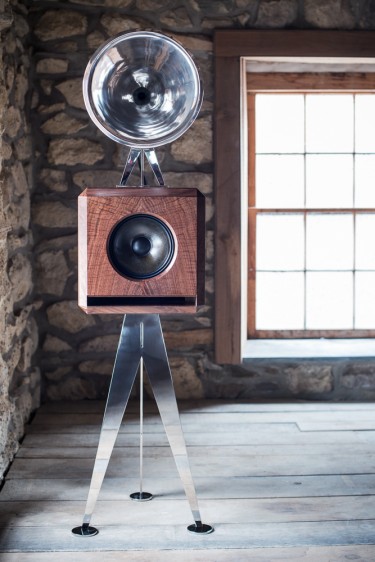
For the moment, the Big Rig is anchored by what I consider to be the finest two-way loudspeaker on the planet, bar none: The Oswald’s Mill Audio “Mini” – a conical horn tweeter in an unlikely marriage with a bass-reflex woofer. I don’t have enough superlatives to lavish on these splendid loudspeakers, and I’ll miss them like a kidney when I finally have to send them back to their home with Jonathan Weiss at OMA – and the time is fast approaching when they have to go back. I’m working on getting the bankroll together to finally own a pair of Minis, but life has managed to be full of lots of little expenses and a few doozies … so my attempts at saving for the Minis have thus far fallen well-short of the mark. I will have a pair, though – after living with these for quite awhile I’m convinced that the conventional approach to loudspeaker design has nothing on these. It has been an entirely addicting experience that has gotten me to let go of my prior (20 year) infatuation with the Sonus Faber Extrema … a pair of which I still have, (but will be happy to sell them to anyone with an appropriate offer).
The rest of the system is comprised of Klimo amplification, and preamplification. A set of TINE monoblocs (2 x EL34 in Push Pull delivering 40 watts), and the Merlino Gold Plus preamplifier. I did get a chance to try OMA’s “Parallax” integrated amplifier in here, loaned to me by fellow crazyman Beau Ranheim, and that was the best I’ve heard the Minis in my room. Alas, the amp had to be returned before I could perform this experiment, but I’ve managed to readapt to mere amazing sound … not so easy to do when you’ve heard soul-shaking astounding sound, funny enough.
I fed the line-out of the AK120 II into the Merlino Gold Plus, to the Tines, and to the Minis. What followed convinced me that my theory was spot-on: the AK120 II is a fantastic player when used as a portable headphone source and amp, but once that line out was at full bore and fed into a high resolution system … BAM! – the magic was flowing. The ability of this little player to parse some seriously high-resolution music and deliver it to this system is kind of shocking, enough to make me think that digital might actually make a permanent return to my big system – which has, for a few years now, been analog only. The only thing missing for this little player is that most indulgent of digital conveniences: a remote control.
I was especially wowed when I played back my VoP needle-drops in this system. The sound of this little player playing back Caliburn-ripped needle drops was uncanny … preserving what seemed to be a lion’s share of the sound of the Caliburn. Very telling, this test, because the player wasn’t editorializing the material – or if it was, I couldn’t squint my ears small enough to hear it.
And this is the little secret of the AK players – though they are designed for the purpose of being top-shelf portable players to drive headphones, they are phenomenal little high-resolution sources for traditional “2-Channel” audio systems! No joke. If you want to play around with outboard DACs, there’s even an optical SPDIF output buried inside the 3.5mm jack/output.
As a portable player, it has few if any equals (the AK240, of course, but that’s to be expected). As a “big rig” digital source, it’s way better than “good enough” – at least for this analog junkie. Yes, the player is expensive – it’s a jewel, a luxury product, and a highly accomplished performer. But the expense seems mitigated by its ability to replace what would otherwise have to be a much more expensive digital system for my traditional 2-channel system.
This manner of double-duty makes it the sort of value I can recommend to music lovers and gear-sluts alike, especially those 2-channel folks who haven’t yet gotten into the headphone enthusiasm but who are intrigued by it. This little player seems to do it all, and with the kind of finesse that Astell&Kern have earned the reputation for delivering. For the gear-slut, it’s the kind of audio jewelry you can be proud to show off anywhere you go – it’s worth ogling, and worth flashing – and it delivers the high performance goods. For the music lover? It’s one of those “constant companion” products that you’ll feel naked without – it holds a tremendous amount of music, and reproduces that music with the kind of mastery that was reserved, not so long ago, for digital systems costing tens of thousands of dollars.
The AK120 II is the real deal: A world-class, high-resolution reference audio system that happens to fit in your pocket.
How cool is that?
UPDATE!
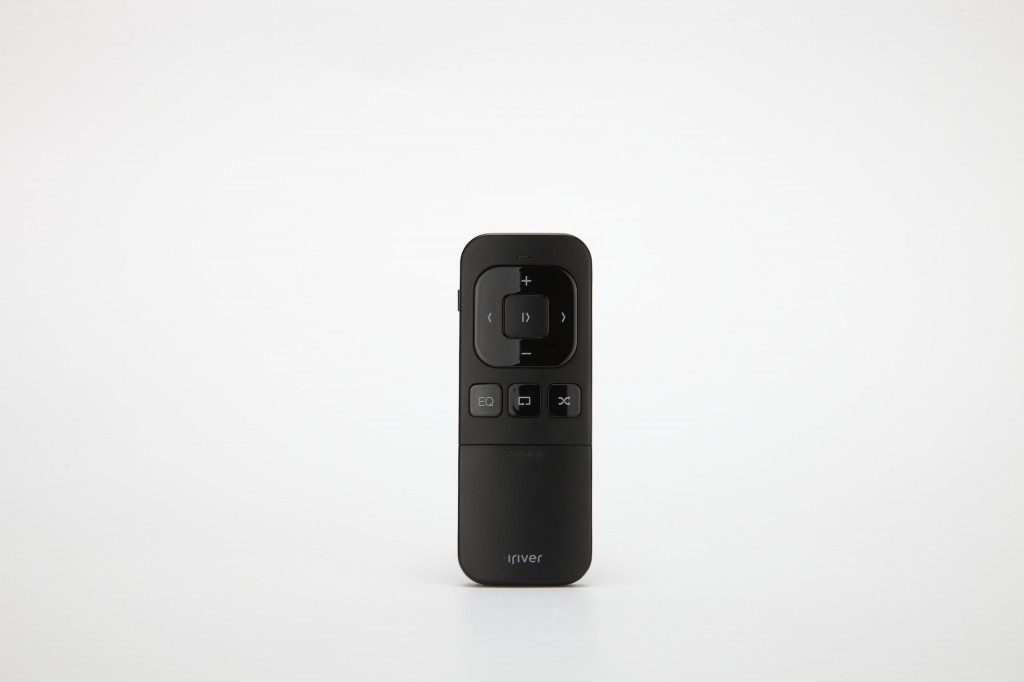
Astell&Kern’s Owen Kwon sent me a little something and it arrived this morning: a Bluetooth Remote for the AK120 II! It allows you a few basic functions: Play/Pause, Fast Forward and Reverse, Skip Tracks, Volume Control, Repeat (on/off), Shuffle (on/off), and EQ (on/off). It won’t allow you to skip between albums, artists, playlists, etc – you have to choose those things at the player. Nevertheless, this kind of changes the game a little. You now have a way to indulge in all the track-skipping and volume tweaking you want – from the distance of your listening seat.
I’ve been playing with it today and I have to admit that I really like the convenience of skipping past tracks I don’t happen to like, especially when I’m just playing randomly through the whole collection of songs stored on the player. The volume control is helpful, as well – I have some tracks that were produced with little or no compression and they like to be at a much fuller volume than the tracks I have of music that has been more compressed. This includes almost all the tracks I have from the electronic-music genre. So when the randomizer is switching between a high resolution, uncompressed recording to an electronic/experimental track that has compression, the difference in apparent volume can be huge and the little volume button on the remote becomes a mighty handy convenience.
This makes the AK120 II that much more recommendable, especially for folks doubly vested between the headphone segment and the traditional 2-channel world.














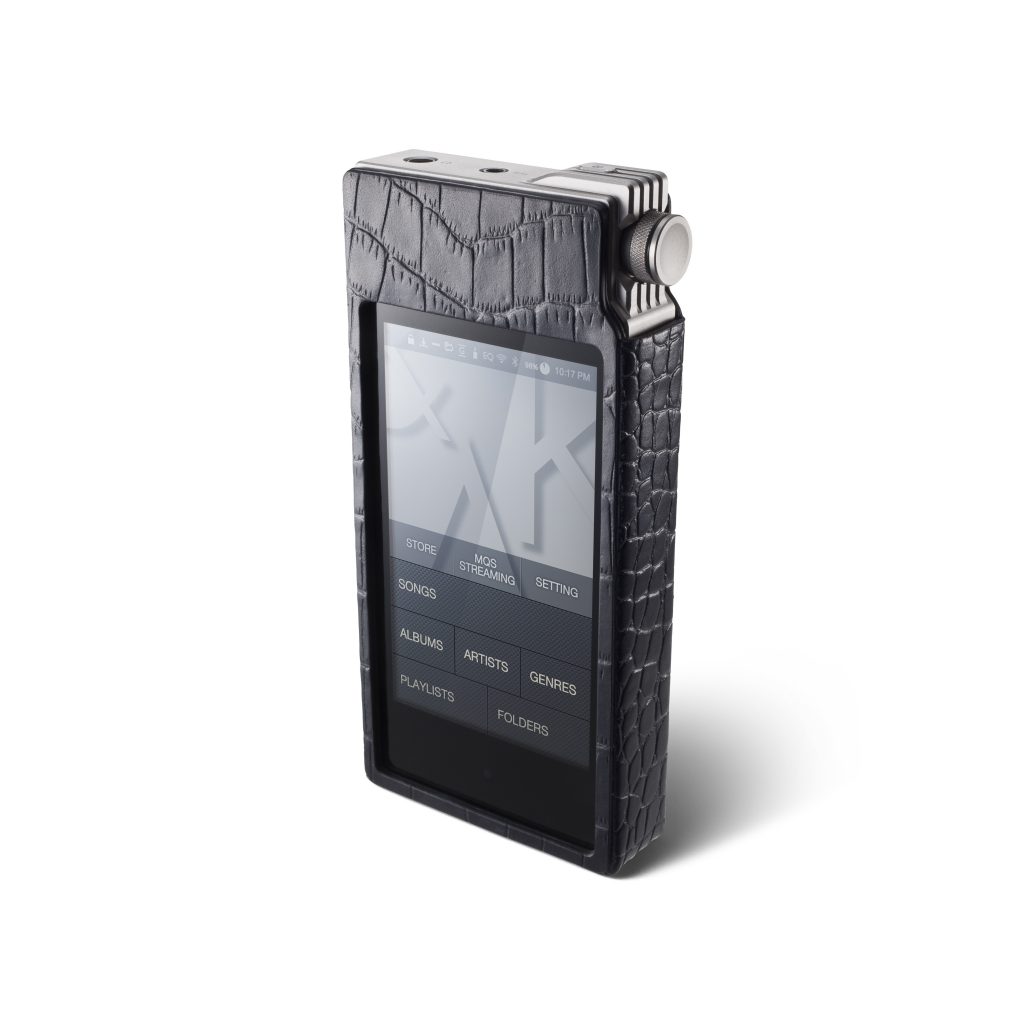
Reply
Want to join discussion?
Feel free to contribute!